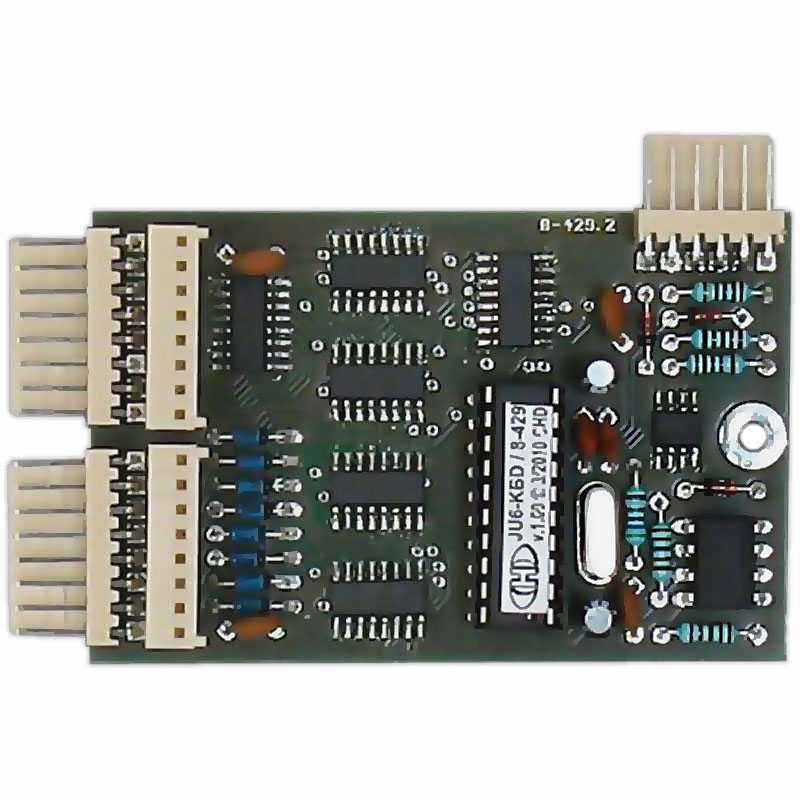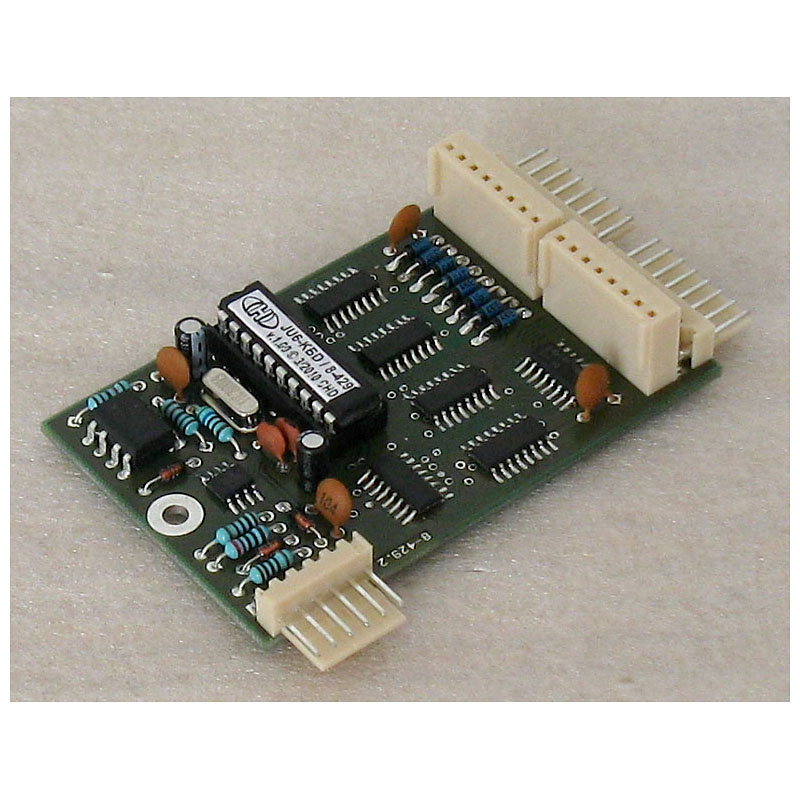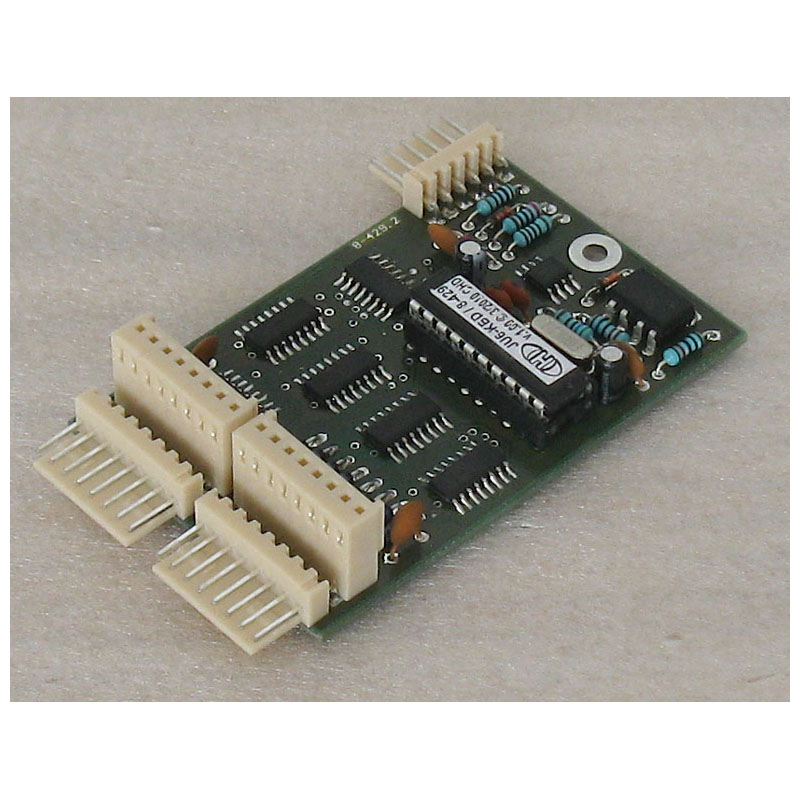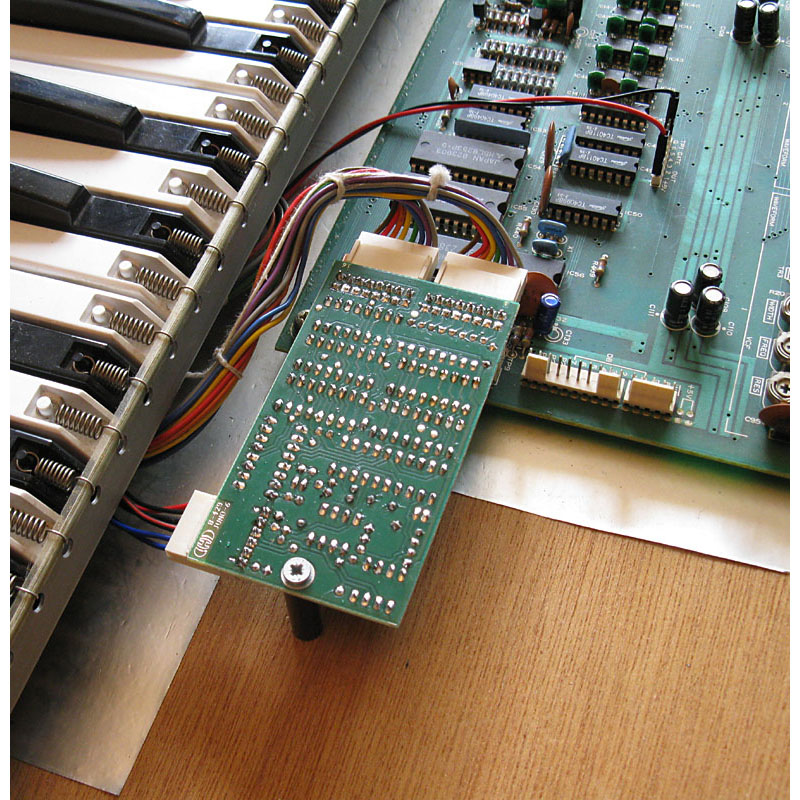Description
Main Features | Installation | Documents & SW Support | FAQ & Troubleshooting
Main Features |
- The interface works in one direction only – it only receives MIDI data. Instrument’s keyboard, knobs, sliders and switches are not transmitted as a MIDI data.
- Controls the Juno’s keyboard (DCOs) and arpeggiator clock from MIDI. The instrument’s tone parameters (control elements on panel) are not MIDI controllable.
- The instrument’s keyboard is controlled manually and by MIDI Note On/Off commands simultaneously (in parallel manner).
- Easy user control of the interface parameters via MIDI CCs (as well as SysEx for experts):
» 61 MIDI Notes (5 octaves) range
» Transpose function (over whole range of MIDI Notes)
» Four modes of MIDI Notes priority can be chosen
» The instrument’s DCOs can be detuned by MIDI Pitch Bend (in semitone steps only) in range 0 to ±24 semitones
» The instrument’s arpeggiator can be synchronized by four tempo sources.
» Hold pedal – CC #64 (works with MIDI Notes)
» User selectable MIDI Channel for communication - 20 internal memory presets to store the interface user settings (the instrument’s tone parameters cannot be stored).
- Original features of the instrument are not changed and the instrument can be used the same way as before the interface installation.
- Very easy installation without the instrument circuits modification.
The interface recognizes MIDI commands:
- Note On/Off
- Program Change
- Pitch Bend
- Standard CCs (Hold, ASO, ANO, RAC)
- Own CCs (# 16-20, 119)
- Common MIDI Synchronization – MIDI Clock
- Common System Reset
- System Exclusive Messages
Installation |
Installation of all MIDI interface parts into the instrument is very easy and no problem should occur if all instructions indicated in the installation manual are kept. Please note that a complete beginner should not carry out the installation. At least basic manual dexterity and knowledge of soldering are required.
The installation process it the same for Juno-6 and Juno-60 instruments – both instruments have identical main printed circuits board.
The JU6-KBD MIDI kit package contains all necessary parts (board, cables, coupling elements, etc.) incl. owner’s and installation manuals in printed form.
Block diagram:

Documents & SW Support |
See list of documents and support software available for download.
Note that Owner’s Manual and Installation Manual in printed form are included in the product delivery.
FAQ & Troubleshooting |
| Problem: | Solution: | |
|---|---|---|
|
The instrument’s arpeggiator stopped working after the interface installation. |
→ |
Check correct connection of blue wires of the interface bunched cables to the instrument. Maybe they are exchanged together. |
|
The instrument’s arpeggiator cannot be synchronized with MIDI clock. |
→ |
» Check if transmitting of MIDI Clock is enabled in your MIDI sequencer / DAW. |
|
Some MIDI Notes are not played. |
→ |
Check setting of “Key Shift” interface’s parameter. The interface accepts only block of 61 MIDI Notes numbers and all other MIDI Notes (out of range) are ignored. |
|
I cannot change receiving MIDI channel. |
→ |
The receiving MIDI Channel number can be changed only via SysEx command (see chapter 6 in owner’s manual for details how to do it). Note that the instrument must be switched off and on again (to reset the interface) after the MIDI Channel number was changed! |
|
How to make “Factory Reset” of the interface? |
→ |
Send “F0 00 20 21 7F 53 40 02 7F 6C F7” SysEx Message to the interface. (See chapter 6 in owner’s manual for details how to do it.) |





